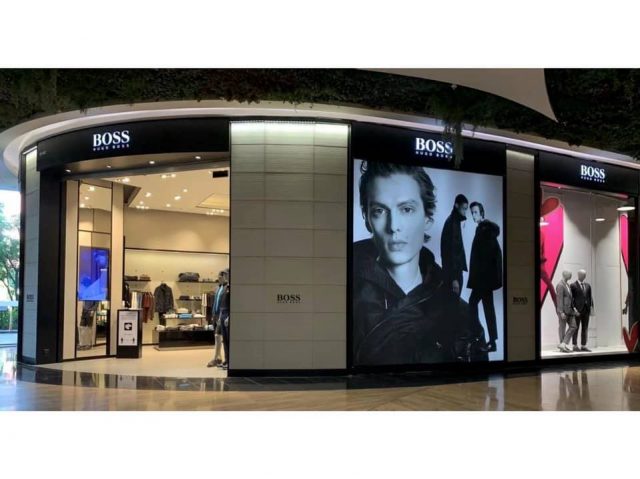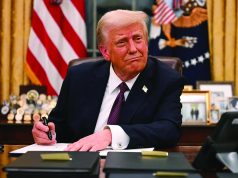Within the last few decades, globalization has become a huge part in the fashion industry across the globe. A number of fashion brands from street wear to high-end fashion have expanded their ways from Western countries to the east and vice versa.
Starting from small shops that sell a minimum amount of branded products, storefronts displaying high-end products have now taken place in shopping malls and department stores.
This globalization and culture has also entered Myanmar in the last few decades, especially after the democratic transitions that started in 2011. Since then, the number of internationally renowned brands that have expanded their markets in Myanmar is of a handful. You can see high-end brands such as Michael Kors, Versace, Moschino and so in crowded shopping malls. They can also be found at the duty-free section at the Yangon International Airport.
However, most of the shops are still left unvisited and untouched, no matter how luxurious they are and how good the quality of the product is. There are several reasons why renowned brands are not making huge success in the local market.
Many people in Myanmar, particularly the rich and affluent types, are used to buying clothing items and accessories from abroad, typically Singapore or Thailand. They may well continue their shopping trips abroad. Gregory Miller, Managing Partner at Myanmar Capital Partners which is a Bangkok-based financial services company with staff in Yangon, said that demand for luxury retail would come out only from the existing moneyed elite, but also from an emerging middle class and Myanmar emigres coming home to pursue business opportunities. On the other hand, there are low to mid-level income families who cannot afford luxury items.
Another reason why authentic brand showrooms are not in popular demand in the country is due to the increased use of social media or online shopping. Increased access to internet through mobile phones offers retailers an opportunity to reach out to millions of customers since they can shop 24 hours a day. As those communication channels and digital platforms are becoming popular and convenient, consumers are now shopping more online rather than physically going to storefronts.
E-commerce and online shopping started in Myanmar around 2015. And now, there are already thousands of online shops selling everything from personal items to food. Retailers mostly buy their products from Thailand and China through border trades.
Online shops sell food, clothing and other personal items traded from those borders and now some have expanded their market into Western countries, selling high-end luxury and designer products. It has made a huge impact on the storefronts such as those from the Central Boulevard and Junction City where most of those showrooms exist, making it difficult for them to operate without visitors and customers.
Some of the most popular high-end storefronts include Michael Kors, The Avenue, Hugo Boss at the Central Boulevard, Coach, Hugo Boss and more at Junction City.
Fashion is influenced by culture, technological advancement and sometimes art. People, especially millennials and Gen Z, tend to follow the latest trends in the fashion world that is changing every day. And this is how the concept of fast fashion started.
Fast Fashion
Fast fashion is defined as “clothing collections that are mass-produced at low cost and that replicate catwalk trends and high-fashion designs”. China is known as the largest source of fast fashion merchandise in the world.
Here, the most important issue with fast fashion regarding luxury brands is that designer brands tend to display their new designs and collections for about twice a year during the Fall/Winter and Spring/Summer fashion week shows. And it gives enough time for fast fashion retailers to make their products by inspiring (or replicating) them for customers who want to achieve their dreams of using luxury brands, but with low price tags.
With Myanmar carrying out border trade with the neighboring country China, the impact of fast fashion has also struck the country. Local online stores mostly sell the fashion products that are imported from China and thus, fast fashion products made from China are now widely used in Myanmar.
Challenges
International brands may be pondering to come to Myanmar and sourcing locally, however, they are aware of the consequences of doing so. International brands and foreign investors are well aware of the fact that operating in Myanmar can be a bit of a challenge with some of the local industries employing underage workers with low wage.
Child labour is a common subject in developing countries with a high level of poverty. According to 2017 global estimates on child labor, slightly less than half of 73 million children in child labour, are performing hazardous work that places their health, safety or moral development at risk.
And Myanmar is not an exception. As per International Labour Organization, there are 152 million children aged 5 to 17 in child labour, and in Myanmar, 9.3% of the child population are in child labour, according to 2015 Labour Force Survey Report.
An article from The Guardian under the topic “Child Labour in the Fashion Supply Chain” stated that employers get away with child labour since the fashion supply chain is complex and it is hard for companies to control every stage of production and it has made it possible to employ children without big brands and consumers ever finding out.
With all those issues being ignored for a long time without proper investigations and recognitions, it has affected the economic situation of the country where investors and merchandisers from Western countries are removing Myanmar from potential investment for garment factories which can possibly lead to higher demand of both online sale and storefronts for luxury goods.
However, no matter how those storefronts are left untouched in Myanmar, there will still be some people who prefer shopping in-store and as the economic situation has become more opened and gained more awareness from foreign countries, we can still hope that consumers’ use of physical stores and online shops for purchasing international fashion brands will be balanced out in the near future.










